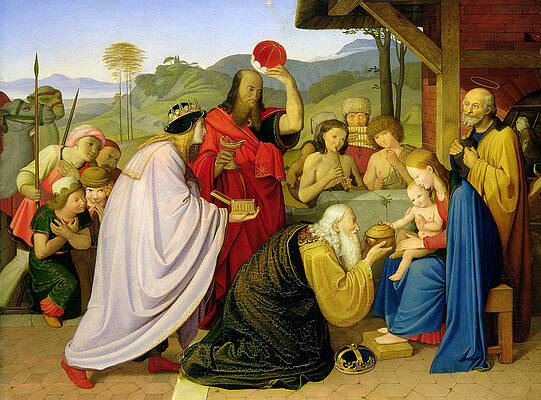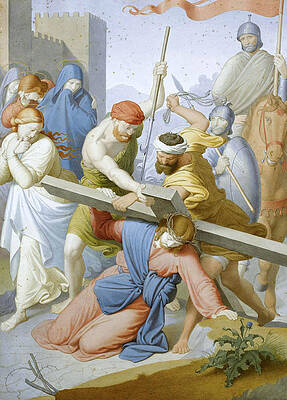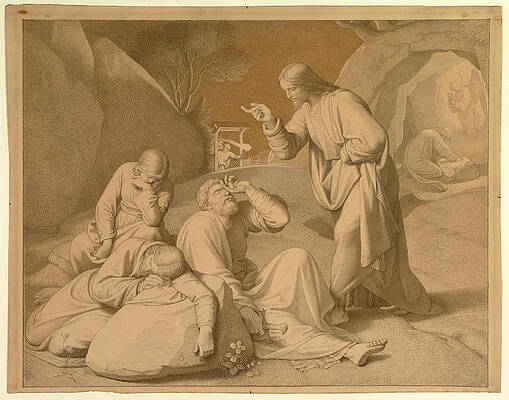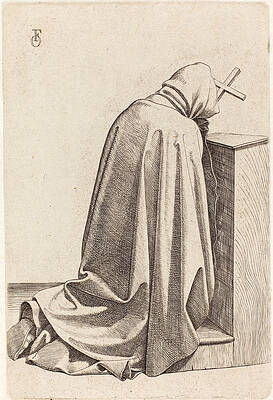Friedrich Overbeck
Paintings
The Adoration of the Magi
The Selling of Joseph
The Way to Calvary
The Banishment of Hagar
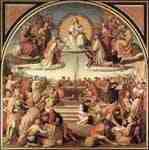
The Triumph of Religion in the Arts
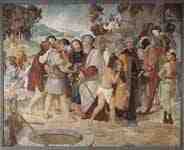
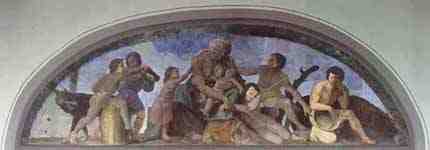

St. Gabriel commands Gottfried the liberation of Jerusalem
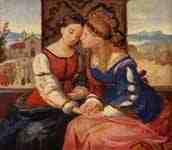
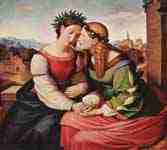
Italia and Germania (Sulamith and Maria)
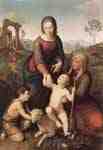
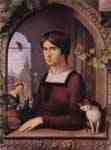
Portrait of the Painter Franz Pforr
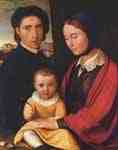
Self-portrait with wife and son
Drawings
Christ in the Garden of Gethsemane
Saint Philip Neri
Praying Monk

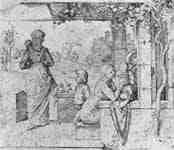
From the Roman life (family photo)
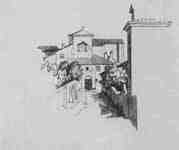
The monastery of Santi Quattro Coronati on Monte Caelio
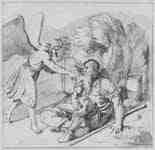
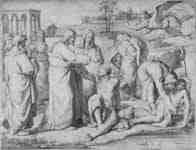
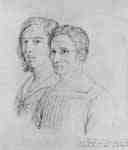

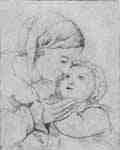
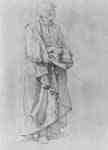
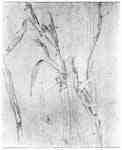
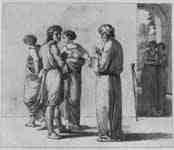
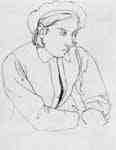
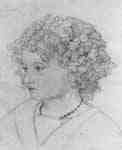

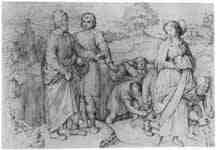
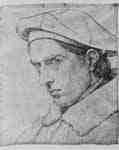
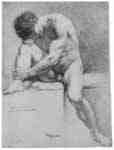


Standing Male Nude, back figure
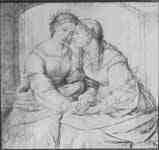
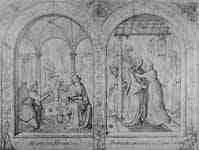
Fine Art Prints | Greeting Cards | Phone Cases | Lifestyle | Face Masks | Men's , Women' Apparel | Home Decor | jigsaw puzzles | Notebooks | Tapestries | ...
Johann Friedrich Overbeck (3 July 1789 – 12 November 1869), was a German painter and member of the Nazarene movement. He also made four etchings.
Biography
Born in Lübeck, his ancestors for three generations had been Protestant pastors; his father Christian Adolph Overbeck (1755–1821) was doctor of law, poet, mystic pietist and burgomaster of Lübeck. Within a stone's throw of the family mansion in the Konigstrasse stood the Gymnasium, where the uncle, doctor of theology and a voluminous writer, was the master; there the nephew became a classic scholar and received instruction in art.
The young artist left Lübeck in March 1806, and entered as student the academy of Vienna, then under the direction of Heinrich Füger. Füger had trained under the French neoclassic painter Jacques-Louis David. While Overbeck clearly accrued some of the polished technical aspects of the neoclassic painters, he was alienated by lack of religious spirituality in the themes chosen by his masters. Overbeck wrote to a friend that he had fallen among a vulgar set, that every noble thought was suppressed within the academy and that losing all faith in humanity, he had turned inward to his faith for inspiration.
In Overbeck's view, the nature of earlier European art had been corrupted throughout contemporary Europe, starting centuries before the French Revolution, and the process of discarding its Christian orientation was proceeding further now. He sought to express Christian art before the corrupting influence of the late Renaissance, casting aside his contemporary influences, and taking as a guide early Italian Renaissance painters, up to and including Raphael. After four years, their differences between his group and others in the academy had grown so irreconcilable, that Overbeck and his followers were expelled.
He left for Rome, where he arrived in 1810, carrying his half-finished canvas of Christ's Entry into Jerusalem. Rome became for 59 years the centre of his labor. He was joined by a company of like-minded artists, including Peter von Cornelius, Friedrich Wilhelm Schadow and Philipp Veit, who jointly housed in the old Franciscan convent of San Isidoro, and became known among friends and enemies by the descriptive epithet of Nazarenes. Their precept was hard and honest work and holy living; they eschewed the antique as pagan, the Renaissance as false, and built up a severe revival on simple nature and on the serious art of Perugino, Pinturicchio, Francesco Francia and the young Raphael. The characteristics of the style thus educed were nobility of idea, precision and even hardness of outline, scholastic composition, with the addition of light, shade and colour, not for allurement, but chiefly for perspicuity and completion of motive. Overbeck in 1813 joined the Roman Catholic Church, and thereby he believed that his art received Christian baptism.
Italia und Germania (Neue Pinakothek).
Timely commissions followed. The Prussian consul, Jakob Salomon Bartholdy, had a house on the brow of the Pincian Hill, called Palazzo Zuccari or Casa Bartholdy, and he engaged the quartet of Overbeck, Cornelius, Veit and Schadow to fresco a room 7 m square (now in the Alte Nationalgalerie, Berlin) with episodes from the story of Joseph and his Brethren. The subjects which fell to the lot of Overbeck were the Seven Years of Famine and Joseph sold by his Brethren, finished in 1818. In the same year Prince Massimo commissioned Overbeck, Cornelius, Veit and Schnorr to cover the walls and ceilings of his garden pavilion, near St. John Lateran, with frescoes illustrative of Tasso, Dante and Ariosto. To Overbeck was assigned, in a room 5 m square, the illustration of Tasso's Jerusalem Delivered; and of eleven compositions occupying one entire wall, is the Meeting of Godfrey de Bouillon and Peter the Hermit. After ten years delay, the overtaxed and enfeebled painter delegated the completion of the frescoes to his friend Joseph von Führich. The leisure thus gained was devoted to a thoroughly congenial theme, the Vision of St Francis, a wall-painting 6.5 m long, finished in 1830, for the Porziuncola in the Basilica of Santa Maria degli Angeli near Assisi.
He died in Rome in 1869. He was interred in the church of San Bernardo alle Terme.
Works
The Adoration of the kings
Christ's Entry into Jerusalem.
Portrait of the Painter Franz Pforra (1810)
Vittoria Caldoni (1821)
Christ's Entry into Jerusalem (1824), in the Marienkirche.(destroyed through Allied bombing, Palm Sunday 1942).
Christus am Ölberg (1827-1833)
Italy and Germany (1828)
Christ's Agony in the Garden (1835), in the great hospital, Hamburg.
Lo Sposalizio (1836), Muzeum Narodowe, Poznań, Poland.
The Triumph of Religion in the Arts (1840), in the Städel Institute, Frankfurt.
Pietà (1846), in the Marienkirche, Lübeck.
Lamentation of Christ (1846)
The Incredulity of St. Thomas (1851), first in the possession of Beresford Hope, London, now in the Schäfer collection, Schweinfurt, Germany.
The Assumption of the Madonna (1855), in Cologne Cathedral.
The Ascension of the Virgin Mary (1857)
Christ Delivered from the Jews (1858), tempera, originally on a ceiling in the Quirinal Palace. It is a commission from Pius IX, and a direct attack on the Italian temporal government, therefore later covered by a canvas adorned with Cupids, and now hanging in front of the Aula delle Benedizione in the Vatican.
The Seven Sacraments (sketches are kept in the cathedral of Orvieto) (1861)
Baptism 1862-64, Neue Pinakothek, Munich
Drawings for the frescoes for the Cathedral of St. Peter and St. Paul in Đakovo (1867–1869).
Family
His nephew Johannes Overbeck, a professor of archaeology at the University of Leipzig, was noted for his work in art history.
Followers of Overbeck
In 1843 the Church of St. John the Baptist, Penymynydd, North Wales was built by the Glynne Family of Hawarden, Flintshire. The first vicar, Rev. John Ellis Troughton spent the first 20 years of the life of the church painting the interior with Overbeck murals, including the Palm Sunday one - of which the original was destroyed in an Allied Bombing raid in 1942, overnight into Palm Sunday.
References
Lionel Gossman. “Making of a Romantic Icon: The Religious Context of Friedrich Overbeck’s ‘Italia und Germania.’” American Philosophical Society, 2007. ISBN 0-87169-975-3. at dianepub.wordpress.com
This article incorporates text from a publication now in the public domain: Chisholm, Hugh, ed. (1911). "Overbeck, Johann Friedrich". Encyclopædia Britannica (11th ed.). Cambridge University Press.
"Overbeck, Johann Friedrich". New International Encyclopedia. 1905.
----
Fine Art Prints | Greeting Cards | Phone Cases | Lifestyle | Face Masks | Men's , Women' Apparel | Home Decor | jigsaw puzzles | Notebooks | Tapestries | ...
----
Artist
A - B - C - D - E - F - G - H - I - J - K - L - M -
N - O - P - Q - R - S - T - U - V - W - X - Y - Z
Retrieved from "http://en.wikipedia.org/"
All text is available under the terms of the GNU Free Documentation License



